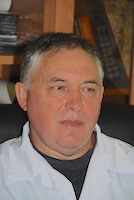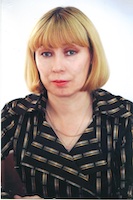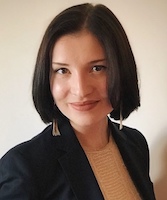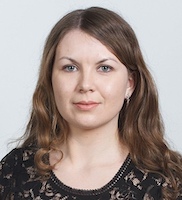A comparison of morphofunctional adaptation of student youth in Kyzyl and Moscow (under different ethical and environmental conditions)
DOI:
https://doi.org/10.25178/nit.2022.1.16Keywords:
anthropoecology; adaptation; students; megapolis; Moscow; Kyzyl; Tuvans; RussiansAbstract
The article is devoted to a comparative study of the directions of adaptation changes in various regional groups – among the youth of Moscow (Russians) and Tuvan residents of Kyzyl, the capital of the Republic of Tyva. The anthropological data of students aged 17–25 were collected in 2015-2019 in Kyzyl, and then in 2019–2021 in Moscow by making use of a standardized methodology. The total number of the young people surveyed was 779. The analysis included morphofunctional characteristics and a number of indices calculated on their basis, which ultimately allowed the authors to assess the adaptive capabilities of the human body.
The problems of biological changes of ethnic groups in the territory of their residence allows to the issue of ethnoecology, taking into account the climatic and geographic situation, as well as the socioeconomic differences in the status of Moscow and Kyzyl.
The morphological data obtained show that the body height and weight of the Tuvan youth turns out to be significantly smaller than that of the residents of the capital, while the BMI shows close to average values. This is due to differences between ethnic groups. As for body composition indicators, the residents of Kyzyl, due to the same physique, have higher values of the fat component predominantly localized in the central region of the body.
The adaptive capabilities the surveyed groups does not seem to have any regional variation: for young men in both cities it shows higher values corresponding to the stress in the adaptation mechanisms. An assessment of functional indicators indicates that Tuvan students have better vegetative regulation of the body, which must be due to their autochthonous status. Residents of Moscow, subjected to the influence of a wide range of factors of life in the metropolis, understandably come second after the peers.
References
Abylkalikov, S. I. (2021) Osobennosti demograficheskogo razvitiia Tuvy: vklad migratsii v demograficheskii balans [Features of the demographic development of Tuva: The contribution of migration to the demographic balance]. New Research of Tuva, no. 4, pp. 131–142. (In Russ.). DOI: https://www.doi.org/10.25178/nit.2021.4.10
Aksianova, G. A. (2009) Osnovnye rezul'taty rasogeneticheskikh issledovanii v Tuve v XX stoletii (obzor literaturnykh istochnikov) [Principal findings of the 20th-century population studies in Tuva: A survey of literary sources]. Archaeology, Ethnology & Anthropology of Eurasia, no. 4 (40), pp. 137–145. (In Russ.).
Alekseeva, T. I. (1998) Adaptatsiia cheloveka v razlichnykh ekologicheskikh nishakh Zemli [Human adaptation in various ecological niches of the Earth.]. Moscow, MNEPU Publ. 280 p. (In Russ.).
Antropoekologicheskie issledovaniia v Tuve [Anthropoecological research in Tuva] (1984) / ed. by T. I. Alekseeva and M. I. Uryson. Moscow, Nauka. 224 p. (In Russ.).
Antropoekologiia Tsentral'noi Azii [Anthropoecology of Central Asia] (2005) ed. by T. I. Alekseeva, V. A. Batsevich, R. M. Munchaev, O. P. Pavlovsky, V. V. Prokhorov and V. A. Spitsyn. Moscow, Nauchnyi mir. 326 р. Pp. 6–126. (In Russ.).
Apanasenko, G. L. (1988) Ob otsenke sostoianiia zdorov'ia cheloveka [On the assessment of the state of health of the human body]. Vrachebnoe delo, no. 5, pp. 112–114. (In Russ.).
Baevskii, R. M. and Berseneva, A. P. (1997) Otsenka adaptatsionnykh vozmozhnostei organizma i risk razvitiia zabolevanii [An assessment of the adaptive capabilities of the body and the risk of developing diseases]. Moscow, Meditsina. 236 p. (In Russ.).
Batsevich, V. A., Butovskaia, M. L. and Kobylianskii, E. (2018) Adaptivnyi status, tempy ontogeneza i dinamika morfologicheskikh priznakov v trekh skotovodcheskikh populiatsiiakh, sokhranivshikh traditsionnyi obraz zhizni [Rates of ontogenesis, dynamics of morphological changes and adaptive status in three present-day pastoral populations who retain their traditional way of living]. Moscow University Anthropology Bulletin, no. 3, pp. 5–20. (In Russ.). DOI: https://www.doi.org/10.32521/2074-8132.2018.3.005-020
Batsevich, V. A., Krasil'nikova, V. A. and Permiakova, E. Yu. (2020) Adaptatsionnye vozmozhnosti studentov iz raznykh raionov Respubliki Tyva [Adaptation capabilities of students from different rayons of the Republic of Tuva]. Moscow University Anthropology Bulletin, no. 3, pp. 19–31. (In Russ.). DOI: https://www.doi.org/10.32521/2074-8132.2020.3.019-031
Batsevich, V. A., Mashina, D. A. and Permiakova, E. Yu. (2020) Sotsial'no-ekonomicheskie preobrazovaniia na territorii Tyvy i izmeneniia adaptivnykh biologicheskikh kharakteristik u korennogo naseleniia [Socio-economic transformations on the territory of Tuva and changes in adaptive biological characteristics of the indigenous population]. Moscow University Anthropology Bulletin, no. 4, pp. 29–31. (In Russ.). DOI: https://www.doi.org/10.32521/2074-8132.2020.4.020-031
Batsevich, V. A., Mashina, D. A., Krasil'nikova, V. A., Iasina, O. V. and Permiakova, E. Yu. (2021) Izmeneniia antropologicheskikh kharakteristik molodezhi Tuvy v sviazi s vliianiem sotsial'no-ekonomicheskikh faktorov [Changes in adaptive anthropological characteristics in Tuvan youth due to socio-economic factors]. New Research of Tuva, no. 3. pp. 148–163. (In Russ.). DOI: https://www.doi.org/10.25178/nit.2021.3.12
Bogdanova, V. I. (1986) Antropologicheskii sostav i voprosy proiskhozhdeniia tuvintsev [Anthropological composition and the issue of the origin of Tuvans]. In: Problemy antropologii drevnego i sovremennogo naseleniia Sovetskoi Azii [Problems of anthropology of the ancient and modern population of Soviet Asia]. Ed. by V. P. Alexeev. Novosibirsk, Nauka.191 p. Pp. 108–162. (In Russ.).
Buduk-ool, L. K., Saryg, S. K. and Khovalyg, A. M. (2012a) Osobennosti adaptatsii k obucheniiu studentov raznykh etnicheskikh grupp [Particularities of adaptation to teaching students of different ethnical groups]. Siberian Pedagogical Journal, no. 9, pp. 92–96. (In Russ.).
Buduk-ool, L. K., Saryg, S. K. and Khovalyg, A. M. (2012b) Ekologo-fiziologicheskaia kharakteristika "adaptivnogo portreta" studentov tuvinskoi i russkoi natsional'nosti [Ecological and physiological characteristics of the «adaptive portrait» of ethnic Tuvan and Russian students]. Mir nauki, kul'tury, obrazovaniia, no. 3, pp. 343–349. (In Russ.).
Buduk-ool, L. K. (2013) Osobennosti adaptatsii k obucheniiu studentov respubliki Tuva [Adapting to tuition in students of the republic of Tuva]. Ekologiia cheloveka, no. 5, pp. 54–60. (In Russ.).
Valiakhmetov, R. M., Baimurzina, G. R., Turakayev, M. S. and Samba, A. D.-B. (2021) Etnosotsial’nye osobennosti zaniatosti naseleniia v respublikakh Tuva i Bashkortostan [Ethnic and social aspects of employment in the Republics of Tuva and Bashkortostan]. New Research of Tuva, no. 4, pp. 206-222 (In Russ.). DOI: https://www.doi.org/10.25178/nit.2021.4.15
Voitikova, M. V. and Khursa, R. V. (2015) Lineinaia regressiia parametrov arterial'nogo davleniia dlia opredeleniia riska razvitiia vtorichnoi gipotenzii [The use of linear regression modeling of blood pressure data to determine the risk of acute hypotensive episodes]. Arterial'naia gipertenziia, no. 6 (44), pp. 38–42. (In Russ.).
Grebniak, N. P. and Vytrishchak, S. V. (2004) Sostoianie zdorov'ia detskogo naseleniia megapolisa [The health status of children in a megapolis]. Gigiena i sanitaria, no. 2, pp. 50–53. (In Russ.).
Deriabin, V. E. and Purundzhan, A. L. (1990) Geograficheskie osobennosti stroeniia tela naseleniia SSSR [Geographical features of the structure of the body of the population of the USSR]. Moscow, Izd-vo MGU. 192 p. (In Russ.).
Ivanova, E. A. (2010) Problemy migratsii v Moskve i vozmozhnye puti ikh resheniia [Migration problems in Moscow and possible solutions]. Vestnik Rossiiskogo universiteta druzhby narodov. Seriia Politologiia, no. 2, pp. 99–104. (In Russ.).
Klevtsova, N. I. (1984) Osnovnye napravleniia mezhgruppovoi izmenchivosti stroeniia tela u tuvintsev [The main aspects of intergroup variability of the body structure in Tuvans] In: Antropoekologicheskie issledovaniia v Tuve [Anthropoecological research in Tuva] / ed. by T. I. Alekseeva and M. I. Uryson. Moscow, Nauka. 224 p. Pp. 125–157. (In Russ.).
Kozlov, V. I. (1983) Osnovnye problemy etnicheskoi ekologii [The main problems of ethnic ecology]. Sovetskaia etnografiia, no. 1, pp. 3–16. (In Russ.).
Maurer, A. M., Batsevich, V. A., Permiakova, E. Yu. and Yasina, O.V. (2020) Sravnitel'nye issledovaniia vozrastnoi i vremennoi dinamiki kefalometricheskikh priznakov i antropologicheskaia fotografiia u sovremennykh tuvinskikh shkol'nikov pri ekologicheskikh izmeneniiakh v populiatsiiakh [Comparative studies of age and temporal dynamics of cephalometric characteristics and anthropological photography in modern Tuvan schoolchildren under environmental changes in populations]. New Research of Tuva, no. 4, pp. 104–119. (In Russ.). DOI: https://doi.org/10.25178/nit.2020.4.8
Negasheva, M. A. (2017) Osnovy antropometrii [The foundations of anthropometry]. Moscow, Ekon-Inform. 216 p. (In Russ.).
Negasheva, M. A., Zimina, S. N., Sineva, I. M. and Yudina, A. M. (2018) Osobennosti morfofunktsional'noi adaptatsii studencheskoi molodezhi, prozhivaiushchei v raznykh gorodakh Rossii [Morphofunctional adaptation of student youth in various cities and towns of Russia]. Moscow University Anthropology Bulletin, no. 3, pp. 41–54. (In Russ.). DOI: https://www.doi.org/10.32521/2074-8132.2018.3.041-054
Negasheva, M. A., Mikhailenko, V. P. and Kornilova, V. M. (2007) Razrabotka normativov fizicheskogo razvitiia iunoshei i devushek 17–18 let [Describing standards for the physical development of young men and women aged 17–18]. Pediatria. Journal named after G. N. Speransky, vol. 86, no. 1, pp. 68–73. (In Russ.).
Nikolaev, D. V., Smirnov, A. V., Bobrinskaia, I. G. and Rudnev, S. G. (2009) Bioimpedansnyi analiz sostava tela cheloveka [Bioimpedance analysis of human body composition]. Moscow, Nauka. 392 р. (In Russ.).
Savitskii, N. N. (1974) Biofizicheskie osnovy krovoobrashcheniia i klinicheskie metody izucheniia gemodinamiki [Biophysical basics of blood circulation and clinical methods for studying hemodynamics]. Moscow, Meditsina. 311 p. (In Russ.).
Sverdlov, Yu. S. (2014) Patofiziologiia serdechno-sosudistoi sistemy. [Pathophysiology of the cardiovascular system]. In 3 parts. Moscow, Garnitura Taims Publ. (In Russ.). Part I. Vazhneishie pokazateli krovoobrashcheniia, primeniaemye dlia otsenki funktsional'nykh narushenii serdechno-sosudistoi sistemy [Key indicators of blood circulation used in assessing functional disorders of the cardiovascular system]. 28 p. (In Russ.).
Tegako, L. I., Marfina, O. V., Skrigan, G. V. and Emel'ianchik, O. A. (2013) Dinamika adaptivnoi izmenchivosti naseleniia Belarusi [Dynamics of adaptive variability of the population of Belarus]. Minsk, Belorusskaia nauka. 303 p. (In Russ.).
Urboekologiia [Urban cology] (1990), ed. by T. I. Alekseeva, L. S. Belokon' and E. Z. Godina. Moscow, Nauka. 240 p. (In Russ.).
Florinskaia, Yu. F. (2015) Vliianie migratsii na rynok truda v Moskve: predstavleniia moskvichei i real'nost' [The impact of migration on the labor market in Moscow: the views of Muscovites vs. reality]. Problemy prognozirovaniia, no. 2, pp. 135–143. (In Russ.).
Fonsova, N. A. and Dubynin, V. A. (2004) Funktsional'naia anatomiia nervnoi sistemy [Functional anatomy of nervous system]. Moscow, Ekzamen. 192 p. (In Russ.).
Fedotova, T. K. (2006) Vliianie ekologii sovremennogo megapolisa na rostovye protsessy doshkol'nikov [The influence of the ecology of a modern metropolis on the growth processes in preschoolers]. Pediatria. Journal named after G. N. Speransky, no. 6, pp. 41–45. (In Russ.).
Chumakov, B. N., Volkov, V. M., Smirnov, V. M., Melkadze, O. V. and Sutormina, A. M. (2004) Megapolis, ekologiia i somatofiziologicheskoe sostoianie podrostkov [Megapolis, its ecology and somatophysiological state in adolescents]. Ekologiia cheloveka, no. 4, pp. 8–13. (In Russ.).
Shilova, O. Yu. (2011) Sovremennye tendentsii fizicheskogo razvitiia v iunosheskom periode ontogeneza (obzor) [Contemporary tendencies of physical development in the ontogenesis of the youth: A review)]. Ekologiia cheloveka, no. 4, pp. 29–36. (In Russ.).
Etnicheskaia ekologiia : narody i ikh kul'tura [Ethnic ecology: peoples and their culture] (2008) / ed. by N. A. Dubova and L. T. Solov'eva. Moscow, Staryi sad. 377 p. (In Russ.).
Etnos i sreda obitaniia [Ethnicity and Habitat] (2014). A collection of articles on ethnoecology. Issue 4 / edited by N. I. Grigulevich, N. A. Dubovoy, etc. Moscow, Staryi sad. 352 p. (In Russ.).
Yampol'skaia, Yu. A. (2004) Skrining-otsenka adaptatsionnogo potentsiala rastushchego organizma: «urovni zdorov'ia) [Screening assessment of the adaptive capability of a growing organism: "health levels”]. In: Problemy sovremennoi antropologii [Issues of modern anthropology]. A collection dedicated to the 70th anniversary of the birth of Professor B. A. Nikityuk. Ed. by V. V. Kuzin, O. V. Matytsin and E. Z. Godina. Moscow, Nauka. 186 p. Pp. 170–184. (In Russ.).
Yamskov, A. N. (2013) Istoriia stanovleniia i razvitiia otechestvennoi etnoekologii [The history of the rise and development of Russian ethnoecology]. Etnograficheskoe obozrenie, no. 4, pp. 49–64. (In Russ.).
Bunak, V. V. (1928) Le Tannou-Touva. Internationales Archiv fur Ethnographie, bd. 29, pp. 1–16. (In French)
Hou, B., Nazroo, J., Banks, J. and Marshall, A. (2019) Are cities good for health? A study of the impacts of planned urbanization in China. International Journal of Epidemiology, vol. 48, no. 4, pp. 1083–1090. DOI: https://doi.org/10.1093/ije/dyz088
Ishikawa, N., Kourtit, K. and Nijkamp, P. (2015) Urbanization and quality of life: an overview of the health impacts of urban and rural residential patterns. In: The rise of the city: Spatial dynamics in the urban century / eds. K. Kourtit, P. Nijkamp and R. R. Stough. Edward Elgar Publ. 392 p. Pp. 259–317.
Kérdö, I. (1966) Ein aus Daten der Blutzirkulation kalkulierter Index zur Beurteilung der vegetativen Tonuslage. Acta neurovegetative, bd. 29, no. 2, pp. 250–268. (In German)
Kharabadze, M., Khetsuriani, R., Betaneli, M., Kandelaki, S. and Khutsishvili, L. (2015) Blood pressure patterns in urban and rural children and adolescents of the Kakheti region (East Georgia). Georgian Medical News, vol. 238, pp. 79–83.
Quetеlet, A. (1870) Anthropometrie ou mesure des différentes facultés de l'homme. Bruxelas. 496 p. (In French).
Sandercock, G. R., Ogunleye, A. and Voss, C. (2011) Comparison of cardiorespiratory fitness and body mass index between rural and urban youth: findings from the East of England Healthy Hearts Study. Pediatrics International, vol. 53, no. 5, pp. 718–724. DOI: https://doi.org/10.1111/j.1442-200X.2011.03354.x
Swainson, M. G., Batterham, A. M., Tsakirides, C., Rutherford, Z. H. and Hind, K. (2017) Prediction of whole-body fat percentage and visceral adipose tissue mass from five anthropometric variables. PloS ONE, vol. 12, no. 5, p. e0177175. DOI: https://doi.org/10.1371/journal.pone.0177175
Xirocostas, Z.A., Everingham, S.E. and Moles, A.T. (2020) The sex with the reduced sex chromosome dies earlier: a comparison across the tree of life. Biology Letters, vol. 16 ( 3), p. e20190867. DOI: http://dx.doi.org/10.1098/rsbl.2019.0867
Published
How to Cite
Perrmiakova E. Yu., Batsevich V. A., Krasil’nikova V. A., Zimina S. N., Khafizova A. A., Yudina A. M., Yasina O. V., Klinyushin A. A. and Sineva I. M. Sravnenie morfofunktsional'noi adaptatsii studencheskoi molodezhi g. Kyzyla i g. Moskvy (v raznykh etniko-ekologicheskikh usloviiakh) [A comparison of morphofunctional adaptation of student youth in Kyzyl and Moscow (under different ethical and environmental conditions)]. New Research of Tuva, 2022, no. 1, pp. 237-252. (In Russ.). DOI: https://www.doi.org/10.25178/nit.2022.1.16
Issue
Section
Copyright (c) 2022 Журнал "Новые исследования Тувы" (составление)

This work is licensed under a Creative Commons Attribution-NonCommercial 4.0 International License.

Author(s) license holder(s) grant rights for their work to the journal (grantee of a license) under the simple non-exclusive open license in accordance with Art. 1286.1 «Open license for a research work, work of literature or fine arts», Civil Code of the Russian Federation.
New Research of Tuva publishes articles under the Creative Commons Attribution-NonCommercial license (CC BY-NC).
Since it is an open license, author(s) reserve the right to upload the article to their institutional repository, submit it to another journal (if it allows republications), or republish it on their own website (in full, or in part).
However, several conditions apply here:
a) The republished version must always contain the name(s) and affiliation(s) of the author(s), the original title and the hyperlink to the original version on the New Research of Tuva website;
b) It must be in open access, free of charge, and no category of readers must be in any way whatsoever advantaged over general readership.
c) should the contribution be submitted elsewhere by its author(s) without substantial modification (30% or more of original text unchanged), the body of the article should contain a disclaimer that the original version was published in New Research of Tuva (with a link to the respective page)
The CC-BY-NC is a non-revocable license which applies worldwide and lasts for the duration of the work’s copyright.

















